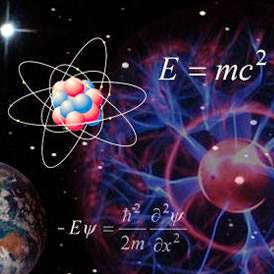 |
| Photo: Y. Nakamura Meijo University Isamu Akasaki Prize share: 1/3 |
 |
| Hiroshi Amano Nagoya University, Nagoya, Japan Prize share: 2/3 |
 |
| Shuji Nakamura University of California, Santa Barbara, CA, USA Prize share: 3/3 |
Hiroshi Amano and Shuji Nakamura "for the invention of efficient blue light-emitting diodes which has enabled bright and energy-saving white light sources".
"The Nobel Prize in Physics 2014". Nobelprize.org. Nobel Media AB 2014. Web. 7 Oct 2014.
TECHNOLOGY REVIEW: If you were to go to Best Buy and, while your friend did something distracting at the front of the store, dismantle one of the Sony 4K Triluminos TVs on display, you’d find a couple of remarkable materials inside. One of the materials is made of quantum dots—tiny crystals a few billionths of a meter in diameter that absorb light of one color and emit light of a very different hue and a very precise wavelength. They’re the basis, for example, for the brilliant red light you see in some medieval stained glass windows. And they’re the reason these Sony displays have some of the most stunning color you’ll see anywhere.
You’ll also find blue LEDs, a feat of science and engineering that took decades of concerted work to create. Like the quantum dots, they rely on quantum mechanics—they use ultrathin structures known as quantum wells to generate light efficiently. Without the blue LEDs, the quantum dots would be useless. The blue LEDs are the light source for the display. Some of the blue goes to lighting blue pixels in the display. The rest stimulates quantum dots to produce green and blue pixels. The red, green, and blue pixels together produce all the millions of colors the display can generate. [Note also Hyper Physics: Particle in a Finite-Walled Box]
Today (7 Oct) the inventors of blue LED lights—Isamu Akasaki, Hiroshi Amano, and Shuji Nakamura—learned that they had won the Nobel Prize for physics. Sony’s Triluminos displays are just one of the latest technologies nased on their invention. Blue LEDs are also used to produce the white backlight inn many more conventional LCD displays, which produce red and green light using materials known as phosphors. The high color quality, compact size, and high efficiency of LED backlights made possible the ultrathin, vivid displays we have now in smartphones, tablets, and laptops.

No comments:
Post a Comment